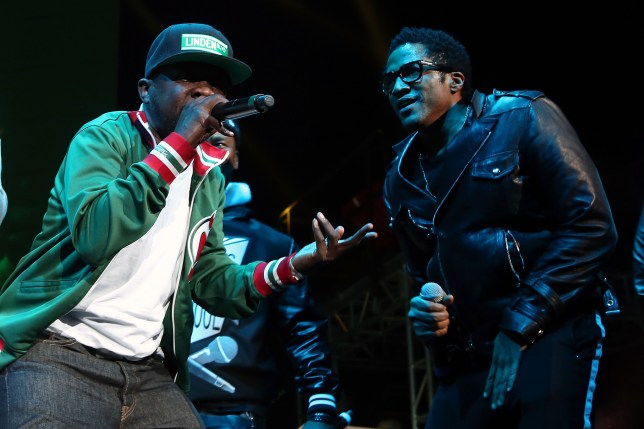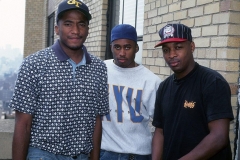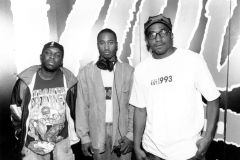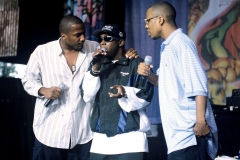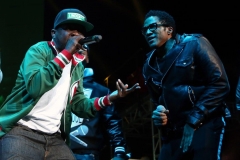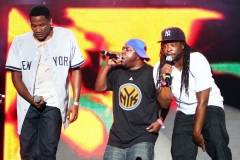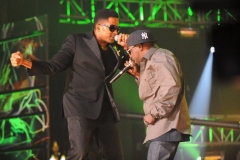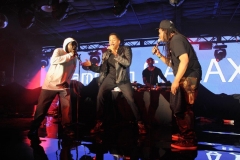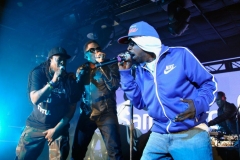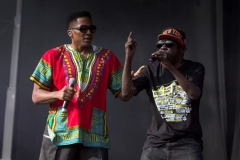Came across this shot of A Tribe Called Quest, which is ripe for over analysing. Every time I see images of Phife Dawg and Q-Tip together on stage I can’t help but clock the clashes in personal style that seem to resonate from their unique makeups and, most importantly, in parallel with their differing lyrical deliveries.
You could talk for hours on almost any aspect of Tribe: the consciousness of Native Tongues, the jazz influences, the record collections, Phife’s illness, Tip’s ghost producing, Jairobi’s culinary skills, Ali’s vegetarianism, Seamans furniture and so on – and the impact that each one of these had on the universally-loved group. So the way they present themselves is really just one small element of the inimitable chemistry that occurred when ATCQ came together, but an observation nonetheless.
Taken in Newark, New Jersey two years ago, the two distinct styles of the Tribe MCs is patently clear. If you’d grown up on the records and this was the first time you’d ever seen a photo of them you’d know instantly who was who. The polished lyrical confidence of Q-Tip aka Kamaal The Abstract and the no-bullshit swagger of Phife Dawg – “the five-foot assassin with the roughneck business” – wasn’t an act or an image decision. Pure authenticity. It’s even possible that these differences were nothing they ever discussed in the decades they were together.
Looking back through the gallery below a pattern emerges. Phife Dawg’s well known love of sports sees him constantly changing from hockey to basketball to baseball jerseys and often matching caps, while Tip moves with fashion from a lanky boulevard teen in a collared button up to Herbie Hancock glasses, a leather jacket and a designer dashiki. These were guys coming up in a scene where Run DMC dressed in sync, Das EFX always threw down in puffer jackets, The Jungle Brothers had matching Hawaiian shirts, Public Enemy were militarising and The Beastie Boys, who constantly changed their image, consciously constantly changed their image.
As well representing the way their lyrical techniques differed (and flowed together) the style differences also came through in their solo projects. Q-Tip evolved to take on the role of band leaders of old, suited up sharper than his backup dancers, conducting like James Brown his live soul orchestra throughout tours off the back of The Renaissance. Phife’s solo outing – the criminally underrated Ventilation – was straight rhyme business, recorded while the man himself was scouting for basketball teams.
If you isolate these differences you could argue it’s incredible that the two came together with such success. But as childhood friends they did come together, along with Jarobi White and Ali Shaheed Muhammad who’re not to be overlooked, and created some of the most influential music ever heard.
RIP Phife Dawg.
